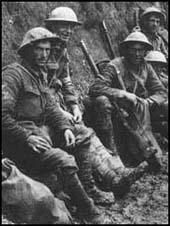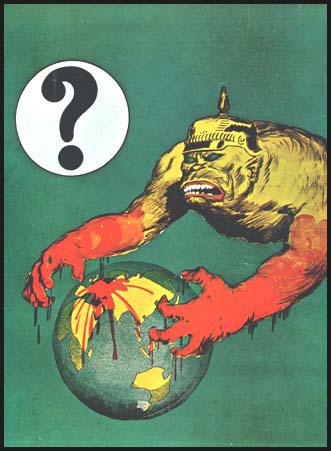Britain in 1914

At the beginning of the 20th century the British Empire covered more than 11,400,000 square miles of territory. This made it the largest empire the world had ever known. The foundations for the empire were laid between 1750 and 1850 during which Britain acquired India, Australia, Canada, New Zealand, South Africa, Rhodesia, Hong Kong, Gibraltar, several islands in the West Indies and various colonies on the African coast. The late 19th century saw the acquisition of new territories in Africa and by 1900 the British king, Edward VII, reigned over 410 million people.
The British Empire was protected by a Royal Navy that included 18 modern dreadnoughts, 29 battleships (pre-dreadnought design), 10 battlecruisers, 20 town cruisers, 15 scout cruisers, 200 destroyers and 150 cruisers.
By 1914 Britain was no longer the dominant economic power in Europe. It still had the world's largest shipbuilding industry but in other areas such as coal, iron, chemicals and light engineering, Britain was out-performed by Germany.
In 1914 Britain was a constitutional monarchy under George V. The government was formed by the majority party of the House of Commons. Members of this parliament were elected by some 8 million registered male voters. The aristocratic House of Lords had limited power to veto legislation.
The Liberal Party had governed Britain since 1906. Senior members of the government included Herbert Asquith (Prime Minister), Sir Edward Grey (Foreign Secretary) and David Lloyd George (Chancellor of the Exchequer). Ramsay MacDonald (Labour Party) and Andrew Bonar Law (Conservative Party) led the main opposition parties in the House of Commons.
Since the later part of the 19th century the British government had considered Germany to be the main threat to its empire. This was reinforced by Germany's decision in 1882 to form the Triple Alliance. Under the terms of this military alliance, Germany, Austria-Hungary and Italy agreed to support each other if attacked by either France or Russia.
France felt threatened by the Triple Alliance. Britain was also concerned by the growth in the German Navy and in 1904 the two countries signed the Entente Cordiale (friendly understanding). The objective of the alliance was to encourage co-operation against the perceived threat of Germany. Three years later, Russia, who also feared the growth in the German Army, joined Britain and France to form the Triple Entente.
By August 1914, Britain had 247,432 regular troops. About 120,000 of these were in the British Expeditionary Army and the rest were stationed abroad. There were soldiers in all Britain's overseas possessions except the white dominions of Australia, New Zealand and Canada.
The Royal Flying Corps (RFC) had been established in May 1912. By 1914 the RFC had 110 aircraft (BE-2, Farman MF-7, Avro 504, Vickers FB5, Bristol Scout, F.E.2) and 6 airships.

on Germany's foreign policy.
